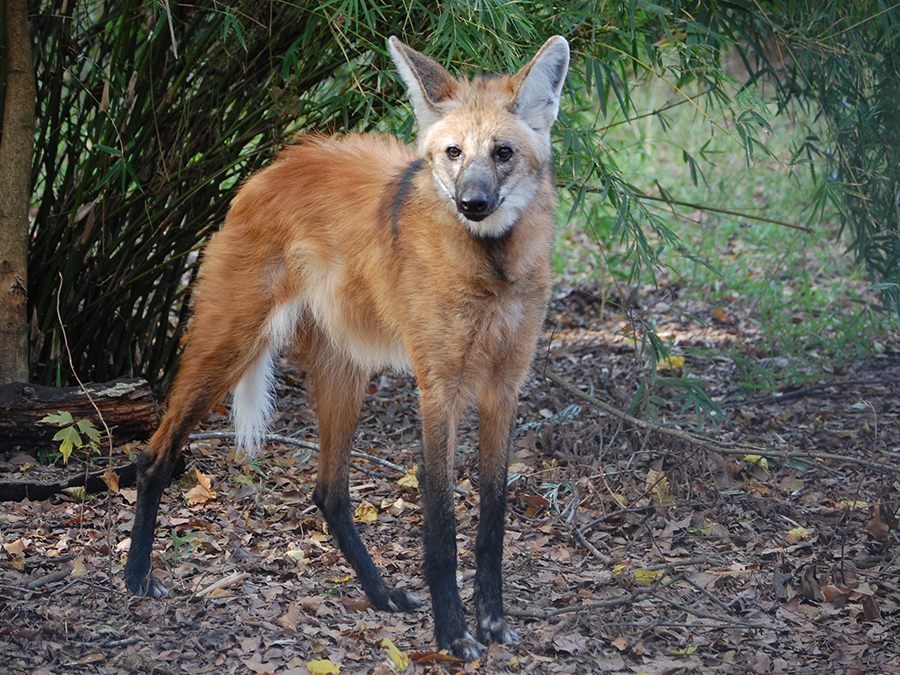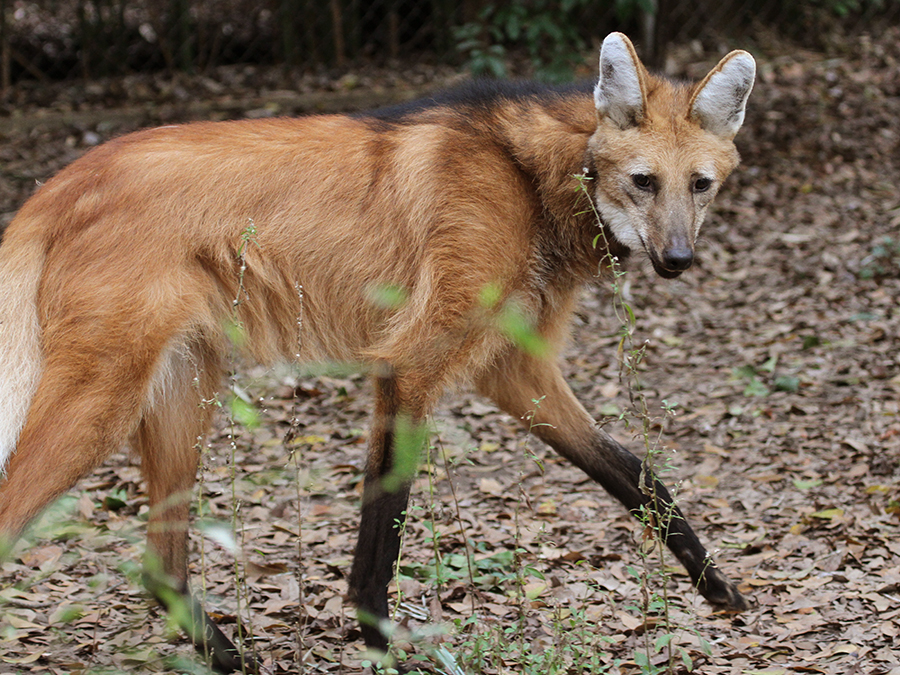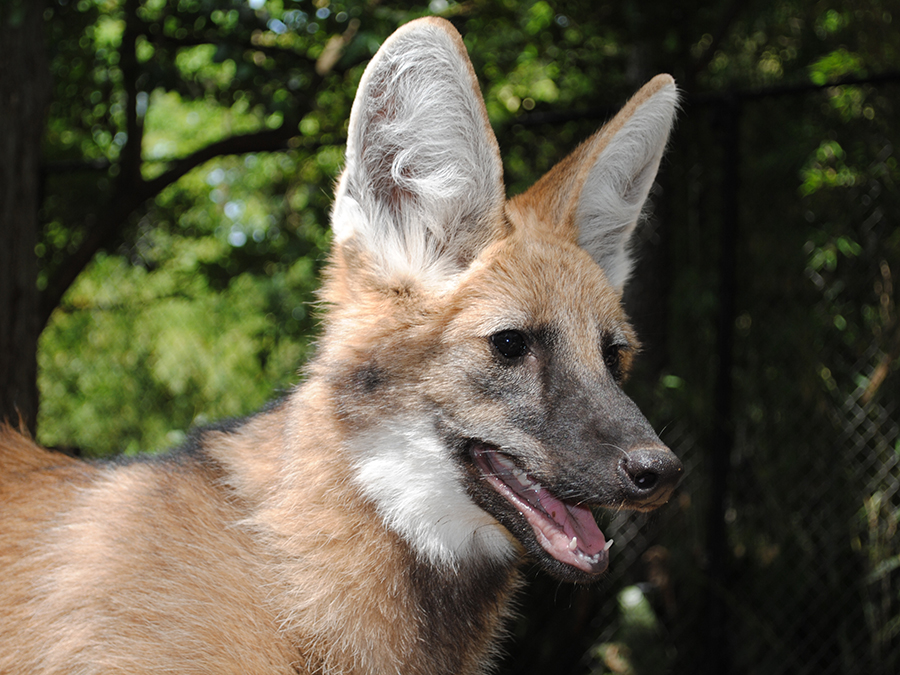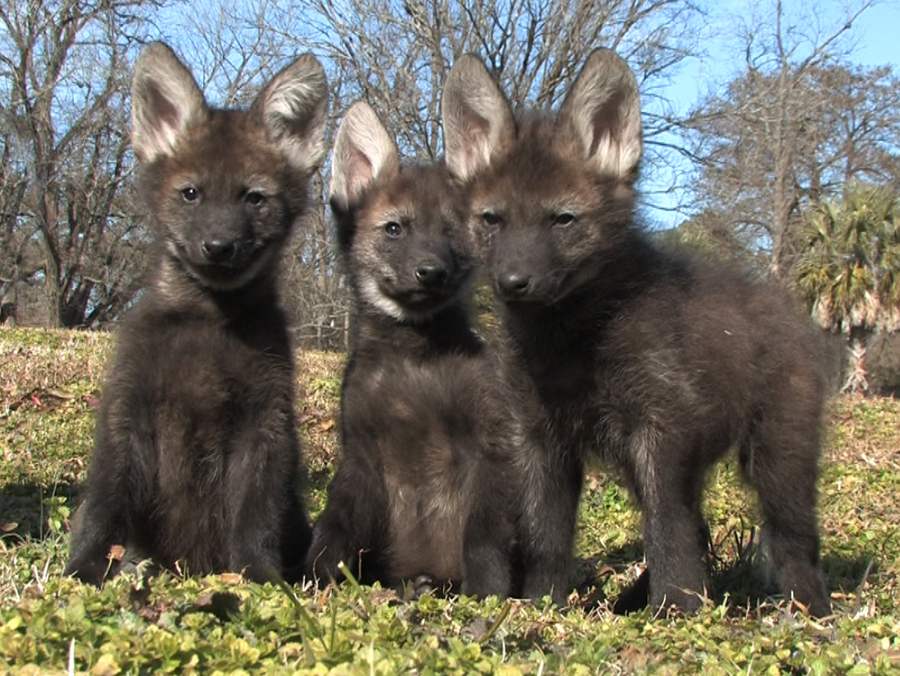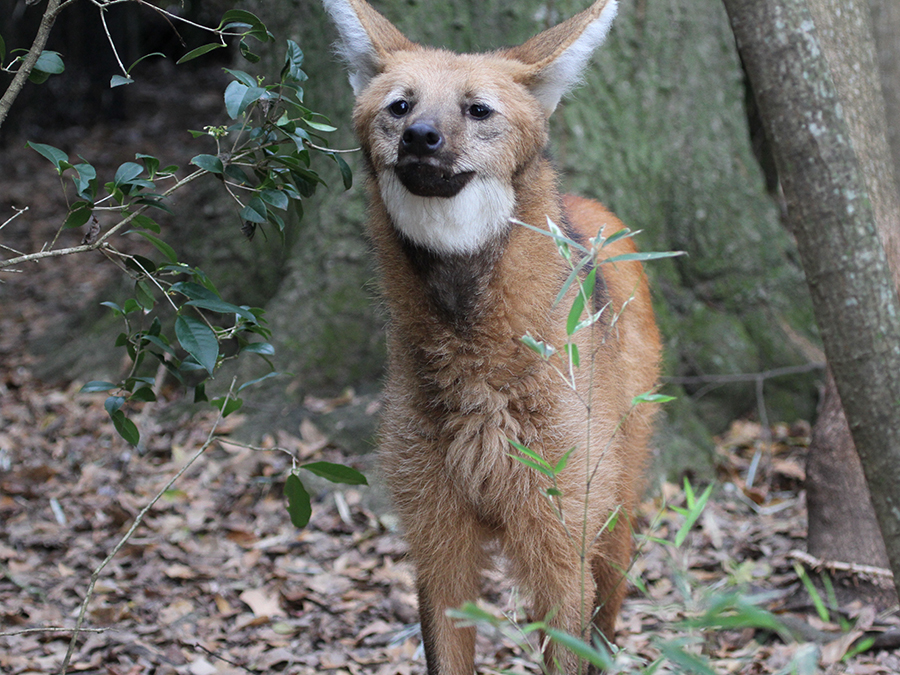Maned Wolf
Chrysocyon brachyurus
CLASS Mammalia | ORDER Carnivora | FAMILY CanidaeRANGE Central and southeastern Brazil, Paraguay, eastern Bolivia, and northern Argentina
HABITAT Open forest, savanna, and marshland
DIET Small mammals, insects, reptiles, birds, bird eggs, fruits, and vegetation
